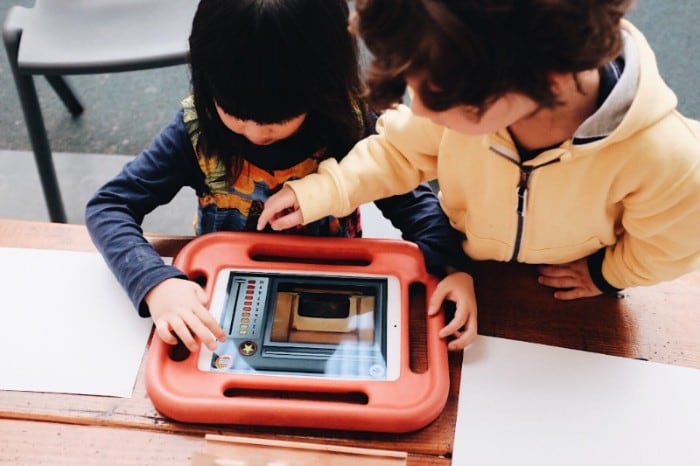
There is no doubt that digital technology is an integral part of our lives. There are current debates around the time children should spend engaging in technology vs physical activity. We know from latest research that Australian children are increasingly becoming overweight (25%) and obese (7%), yet awareness of healthy eating and wellbeing are currently at the forefront of education.
“Digital technology is not just about devices. It also involves how people use, respond to, participate in and engage with the different forms of digital information. We use digital technology extensively as we go about our daily lives; to purchase food and other goods, to organise travel, to access entertainment and music, to manage our personal finances, and to monitor health and fitness.
Digital technology is also used in educational settings and workplaces around the world for a diverse range of tasks including communication, research, sharing information, socialising, playing, and recording images and videos. Digital technology is increasingly present within family life, and many young children are interacting with apps, games and high-tech toys that are designed specifically for the under-five age bracket.
As young children are born into this tech-connected society, early childhood professionals are increasingly responding to questions on the rightful role and optimal use of digital technology in early childhood settings.”
(Source: ECA Discussion Paper April 2018, Early Childhood Australia’s Digital Policy Group)


So, what are the recommendations for managing our children’s experiences with digital media?
1. Parents need to be the pilot of the digital plane, and not the passenger. Our children need guidance and direction about how to navigate the digital world and they’re needing that guidance from their parents. Parental engagement in your child’s digital life isn’t optional- we need parents to assume an active role.
2. Keep devices out of bedrooms- research is confirming that digital devices in bedrooms delay the onset of sleep (blue light impacts on melatonin levels which causes sleep delays) and are also impacting the quality of children’s sleep (alerts and notifications are interrupting students’ sleep cycles). There are also mounting cyber-safety concerns if children have access to devices in bedrooms.
3. Balance children’s’ screen-time and green-time- children still need outdoor, unstructured play. Time in natural sunlight may help to prevent myopia (near-sightedness) and is essential for brain function (time in nature allows for mind-wandering mode) and allows the brain and body to recalibrate after being hyper-aroused by screens.
4. Focus on more than simply ‘how much’ screen-time children are accumulating each day. Instead of focusing exclusively on using time as a metric, parents need to also consider what, when, where, with whom and how screens are being used. Time is only one piece of the puzzle.
5. Be mindful of your digital habits- children have mirror neurons and this means they’re literally wired to imitate. Parents need to be mindful of how they’re using digital devices, as parental digital distraction has resulted in increasing rates of childhood playground injuries and is changing child-parent interactions. I don’t suggest that parents need to abstain from using technology around their children, but they do need to model healthy habits.
(Top 5 Tips for Managing Screens in the Digital Age source Dr Kristy Goodwin)
Conversations and decisions around what is best for our children in the digital age are ongoing – at Explore & Develop, we are committed to keeping families engaged with these relevant discussions, whilst providing best practice – watch this space!
To find out what media and apps are appropriate for your child have a look at the Australian Council on Children and the Media.
Goodwin, K. (2016) Raising your child in a digital world. Finch: Lane Cove
Edwards, S. ; Straker, L. and Oakey, H. (2018) – Discussion Paper: Towards an Early Childhood Australia statement on young children and digital technology. ECA Digital Policy Group: ACT
Author: Charlene Fredman, Explore & Develop Brookvale